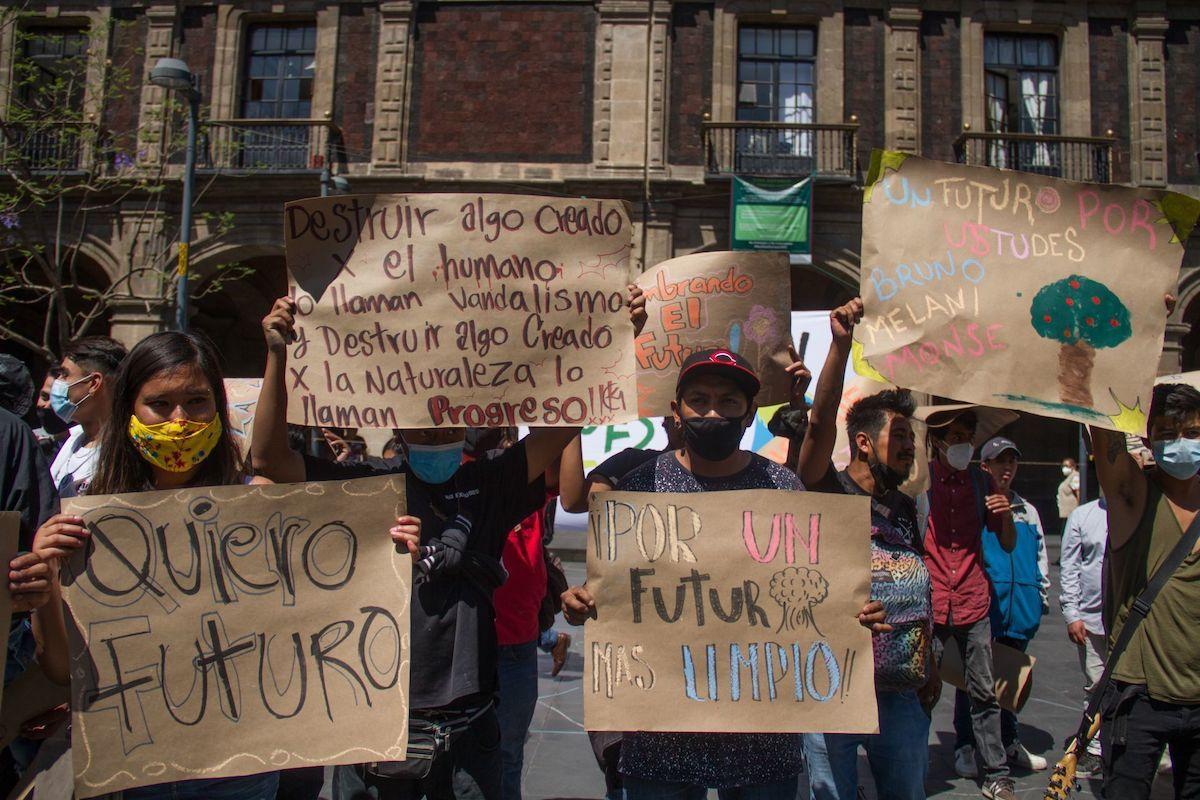The Federal Expenditure Budget Project (PPEF) for Fiscal Year 2023 plans to allocate more than 187,968 million pesos in resources for the adaptation and mitigation of the effects of Climate Change.
However, a large part of the resources contemplated in this cross-cutting axis are not related to mitigating and combating climate change. Health insurance, bonuses, equipment maintenance are also part of that budget.
This is one of the nine Cross-Sectional Annexes to the budget program provided for in the Federal Law on Budget and Fiscal Responsibility, in which resources from several public agencies destined for a specific purpose converge.
According to the Center for Public Finance Studies (CEFP), it is about the integration of monetary resources that can contribute to solving and addressing a specific problem or a specific population group in a comprehensive way.
When talking about a comprehensive solution, it is possible to talk about more than one institution serving the same purpose from different areas, in this case Climate Change.
In the breakdown published by the federal government for the Fiscal Year, there are expenses that are of an operational nature of the public agencies themselves and do not necessarily contribute to the fight against Climate Change.
To name a few examples, the budget for Combating Climate Change includes an item labeled “Prizes, Incentives, Rewards, Scholarships and Insurance for Athletes”, by the National Polytechnic Institute, in the amount of 410,000 pesos.
The National Fund for the Promotion of Tourism (Fonatur) has a budget of 76,000 pesos for the item “Food products for personnel in the facilities of dependencies and entities”.
This institution also included air and land tickets, as well as leases, for 1.5 million pesos in environmental spending.
Various institutions that are not directly related to the environment, such as universities and colleges, also added year-end bonuses, bonuses and payments to workers' social security. These amounts amount to more than 437 million pesos.
The Secretariat of the Navy, for its part, scored 13 million pesos to use the federation's naval power to “safeguard national sovereignty and security.”
These expenses are included in the Transverse Annex, although the Law specifies that only forecasts that correspond to the mitigation of the effects of climate change should be included.
In the breakdown by category provided in the Annex, the largest amount of resources for combating climate change will be allocated to civil engineering and heavy construction, with 82 billion pesos allocated.
Other areas that consume a large part of the budget are production subsidies and export fuels for production plants, with 35 billion and 16 billion pesos, respectively.
For the construction of works for the supply of water, oil, gas, electricity and telecommunications, 1,987 million pesos are contemplated. For guaranteed compensation, 402 million pesos are expected and additional allowances to salaries, 228 million pesos.
The Transverse Annex of the PEF on Climate Change (AT-CC) is provided for in the General Law on Climate Change and since 2013 it has integrated budgetary programs aimed at this objective.
Sol Pérez Jiménez, PhD in Environmental Geography and researcher in the Land and Territory program of the civil organization Fundar, said that the composition of the budget does not allow us to understand how program expenses are related to the objectives of the transversal annex, which is the fight against climate change.
“Since there is not enough information or a breakdown of what mitigation or adaptation measures to climate change complement these programs, it is very difficult to evaluate if they are certainly addressing this problem,” said the expert.
Pérez Jiménez adds that beyond concentrating the budget on the municipalities that are most vulnerable to climate change, there are these budgets for urban improvement or painting that are not necessarily contributing to the annex.
In December 2017, the first strategic evaluation of this Annex was published, by the National Institute of Ecology and Climate Change. He says that although it is carried out in compliance with budgetary regulations, its design does not consider cross-cutting criteria for climate change that are documented and applied in a systematic way.
It also points out that it does not adhere to the internationally recommended practice of having basic consensus between the substantive areas that execute the programs and the administrative areas that plan and program resources for the process of allocating and applying expenditure.
Another concern raised by the Fundar researcher is that a significant part of the budget to combat climate change in 2023 is allocated to fossil fuels, which goes against the decarbonization goals derived from the Paris Agreement.
“Although it seems like a large climate change budget, it is still completely different from the budget allocated to Pemex and CFE, which means that the energy model they are worsening, the climate crisis, are still much more privileged,” said the specialist.



Comentarios (0)